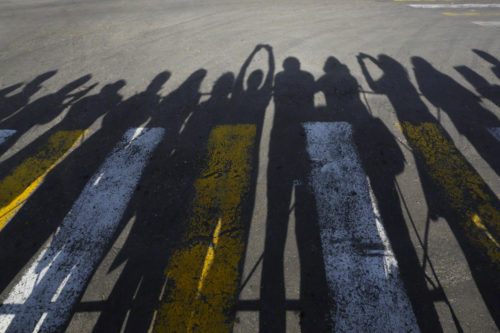
Several months ago, right before the total solar eclipse, I was listening to a piece on CBS Sunday Morning. Btw, it’s one of the best programs on TV.
They were talking about the word Umbraphile which literally means a “shadow lover”, but when properly applied it means one who’s addicted to the “glory and majesty of total solar eclipses”; and will drop everything they are doing to see one…wherever it my be on the globe. I can tell you that I don’t go chasing eclipses, but I will admit to being a lover of the shadow; which, by the way, is a photographer’s best friend.
Umbraphillia is thought by many a smart college educated person to not only be an addiction, but an affliction as well. I guess that means me…YIKES!!
I am addicted to light and shadows (and proud of it), so much so that in my online classes “Stretching Your Frame of Mind” and “Stretching Your Frame of Mind II” , students learn beforehand exactly where shadows will fall any day of the week, anywhere in the world. Using a program called Sunpath, and coupling it with a hand bearing compass called a Morin 2000 not only do they learn where the shadows will fall, but which direction the light will be coming from, when it will be coming, how long it will be there, and when it will leave.
Once the interrelationship between light and shadow is established, a mood is set and the results can range from mysterious to downright scary. Shadows can affect how the viewer perceives and is a quick way to conjure up all kinds of emotions by giving a dramatic edge to your composition. Shadows can also be used as lines to move the viewer around your composition or as elements to point to a subject or one of your centers of interest.
Photographers usually don’t give shadows any consideration; in fact, to many they can be intimidating. Truth be told, they are leaving out a very important part of their imagery. Shadows can suggest what we can’t see in our reality. In fact, shadows help us to “celebrate the unseen”. Also, the next time you’re out shooting, don’t think/worry about shadows falling on people’s faces, as that creates not only visual interest, but visual tension as well; through the use of contrast.
In the above photo, I was standing right behind a barrier in Havana, Cuba when Obama drove by. I looked down and saw the shadows that to me told a story.
Here’s some ways to incorporate shadows:
1) Try making the shadow the main subject. It can tell a story on its own.
2) Try distorting the shadows.
3) Try to duplicate your silhouette with a shadow.
4) Try using a shadow to fill in an empty space in your composition. It can create interest in an otherwise boring area.
5) Try using the dark shadows to extend a dark subject. For example, the shadow coming from a tree.
6) Try using the late light from the ‘golden hour’ to reveal more about Texture, and form.
7) We know that Line can draw the viewer to the main subject. Try using shadows to do the same thing.
8) Just for fun, try turning your photo upside down, so the subject takes the place of the shadow, and vice verse.
Maybe I’ll start a new self-help organization and call it…shadow lovers anonymous!!!
-BPSOP Instructor: Joe Baraban
Joe Teaches:










